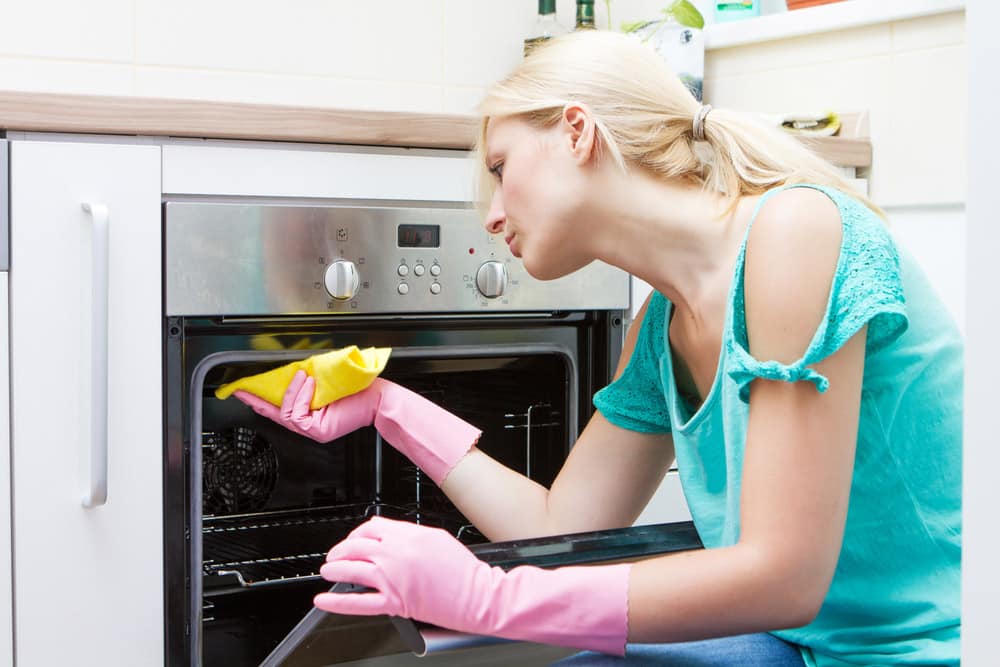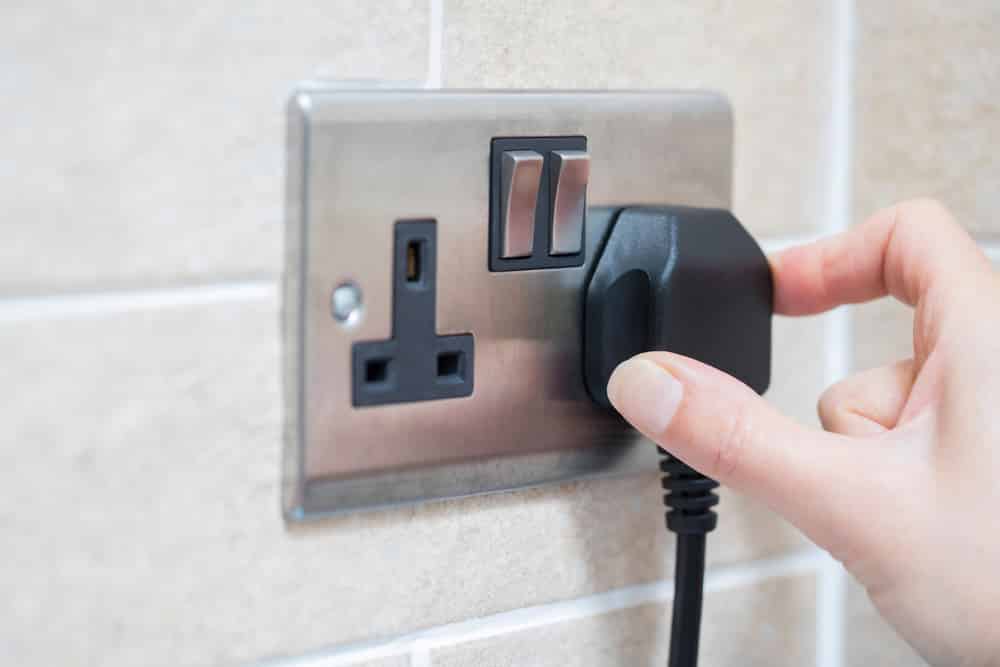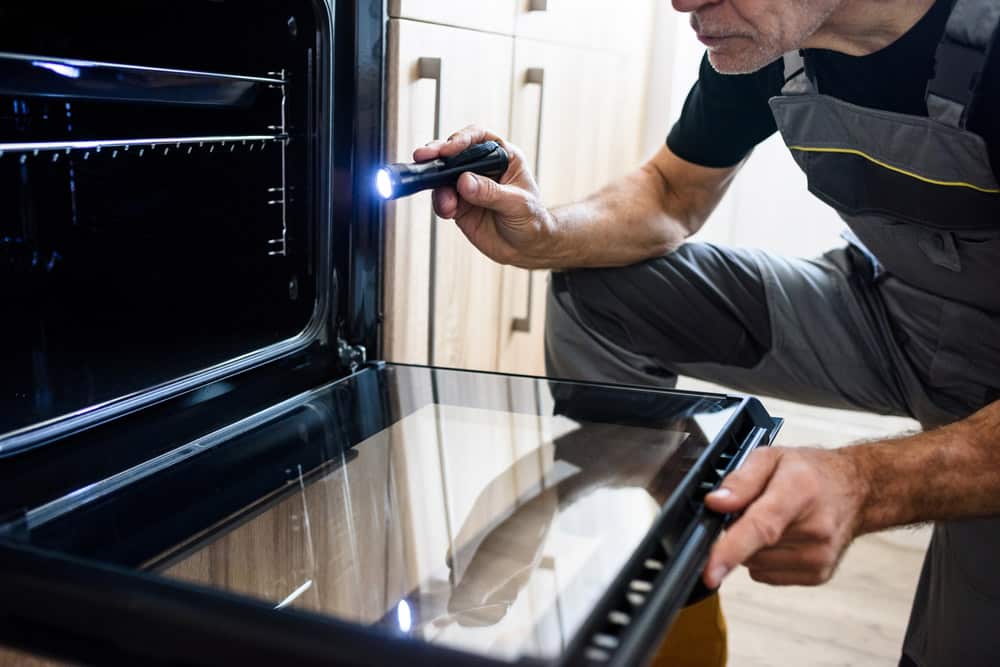
KitchenAid has been known as one of the most reliable oven brands. They have professional designs that have made them a favorite among professional bakers, pasta makers, and those who like to bake at home.
The KitchenAid oven has excellent features like Even-heat preheat and temperature probe and is easily placed anywhere. No doubt, it is highly durable; however, users have also faced some problems running the KitchenAid ovens. In this article, we will take you through some of those problems.
KitchenAid Oven Problems
- Ignitor
This is the most common issue associated with KitchenAid ovens. The function of the ignitor is to draw current from the oven’s safety valve and open it. It gets very hot, hot enough that it glows and ignites the gas in the burner.
If the ignitor does not work properly, it will not open the safety valve correctly. Which, in turn, will not allow the oven to heat.
Checking the Ignitor
To find out if your ignitor is faulty and causing the oven to not heat:
- Turn on your oven.
- Give your glowing ignitor up to two minutes; if it fails to ignite the burner during this time, it means there is some problem with it. Since the ignitor is too weak to ignite the stove, you will have to replace it.
- If the ignitor does not glow at all, check it for continuity. If it does not have continuity, you will need to replace it.
Additionally, it is not uncommon for the ignitor to get blocked and, as a result, not allow the oven to work. This happens when carbon residuals or dirt particles clog the way, and the gas is not permitted to pass.
Cleaning the Ignitor
To clean the ignitor, first of all, turn off the main power supply to the oven. You must be extremely careful not to clean the oven while it still has power running through it, as it can be hazardous. Once you are sure that your oven has no electricity running through it, open the ignitor cap.
Using a paper towel or a wet cloth, clean the inside of the ignitor with it. Please do not use a dripping wet towel or cloth; it should be damp enough to let the dirt stick to it. And yes, do not immediately turn on the power supply when you are done cleaning.
If you have been using a wet towel, give it some time to dry any water remnants. Then, turn on the power supply and check to see if your ignitor is working correctly now.
- Burned-Out Bake Element
A perfectly working bake element will glow red when in use. If your bake element is not shining, it is an indication that it is damaged. If your food is not cooked evenly, the problem is most often with the bake element.
Since a burned-out baking element will almost always have visible signs of damage, you will not have to do a lot of inspection. Check for any blisters or holes; they should tell you if the bake element is damaged. If you are successful in finding any, replace the bake element to restore the oven’s functionality.
- Power Problem
Most electric ovens require 120 to 240 volts of alternating current (please check product specification), whereas gas ovens require 120 volts. If your oven is not heating, there could be a mismatch between the required and provided power supply.
Determine the power requirement of the oven and then similarly see what power your electrical outlet is supplying.
- Oven Shows An Inaccurate Temperature
If your oven is showing inaccurate temperature, there must be a problem with your temperature control thermostat. The temperature control thermostat keeps a check on the temperatures inside the range. It maintains the cycle of heat if the temperature gets too low.
Suppose the temperature control thermostat of your KitchenAid oven is not calibrated correctly. In that case, it will fail to cycle the heat at the required time. This might result in the oven temperature getting too high or too low and also showing an inaccurate temperature.
The thermostat is a complex component of the oven, so you may be unable to test its operability yourself. It is best to get a qualified technician to check the thermostat and fix it.
- Broiler Not Working
Similar to the baking element, there is also a broiling element in the oven. If your broiler is not working correctly, it means your broiling element is not working as it should. Like the baking element, the broiling element also glows red when working correctly.
- Checking the Broiler
Observe your broiling element. Is it glowing red when you turn on the oven? If not, turn off the oven and wait for a while to let everything cool down. Then check the broiling element for signs of burnout, such as holes, blisters, or a burned texture.
In addition to that, you can also check the broiler for continuity with a multimeter. If the broiling element does not have continuity or has holes and blisters, you will have to replace it with a new one.
- Defective Wire
Another reason why the broiler may not be working is that the wire that supplies power to the broiling element may have become loose or burned out. This is not uncommon for cables placed near the broiling and heating elements.
Examine the wires leading up to the broiling element, and scan for damage. Check to see if the wire is loose or burned out. In case it is the latter, the wire will be visibly burnt. Replacing the faulty wire will get your boiler working again.
- The Oven Does Not Turn On
If your KitchenAid oven is not turning on, the issue lies with the power supply. The KitchenAid oven, like all other kitchen appliances, will need an uninterrupted and constant power supply to work properly.
The first thing to do in case your oven is not turning on is to check if the socket you are using is functional are not. Then, ensure that the power cord is correctly inserted into the socket. If you are using an electric oven, you will need to provide it with a proper power supply.
Gas ovens, on the other hand, require 120V. It is essential to provide the correct voltage because incorrect voltage might damage the inner circuits of the oven.
Error codes can be puzzling, especially if you are seeing them for the first time. They are, as is obvious by their name, displayed when something is wrong with your range.
The good thing about error codes is that with each error code displayed, you can figure out exactly what the problem is along with its workable solutions. If you see an error code on your screen, do not fret. Refer to the instruction manual that has all the necessary information.
It will likely have the solution for your error code. If the manual does not help, you can always reset the range. Often, power restarts like this can fix the error codes, and the next time you turn your oven on, it will be error-free!
- The Door of the Oven Doesn’t Shut Properly
If the door of your KitchenAid oven is not shutting correctly, it is likely because of its hinges. You will have to remove the door, fix its hinges and then put it back in its place. While the door is removed, check to see if it needs cleaning. If it does, clean it thoroughly.
Your oven may not be working because its convection fan is impaired. Some ovens have in-built convection fans that create hot air to cook food. If your oven lies in the same category, it will be wise to have it inspected.
Convection fans tend to become damaged when used too much. Enlisting the help of professionals is the best thing to do in this scenario.
Final Thoughts
We have mentioned some common issues that you might experience with your KitchenAid oven. It would be better to read the instruction manual thoroughly and get to know all the dos and don’ts of your KitchenAid range.
As long as you maintain it properly, you should be able to avoid most of the problems we discussed above and have your KitchenAid oven last for a long while.



